 To enhance service speed and avoid tariff delays, we've opened a US warehouse. All US orders ship directly from our US facility.
To enhance service speed and avoid tariff delays, we've opened a US warehouse. All US orders ship directly from our US facility.
| Cat. No. | Product Name | Field of Application | Chemical Structure |
|---|---|---|---|
| DC10173 | Firsocostat(ND-630,GS-0976) Featured |
ND-630 is an acetyl-CoA carboxylase (ACC) inhibitor; inhibits human ACC1 and ACC2 with IC50 values of 2.1 and 6.1 nM, respectively.
More description
|

|
| DC10486 | NCT-503 Featured |
NCT-503 is an inhibitor of 3-phosphoglycerate dehydrogenase (PHGDH), inhibiting serine synthesis from 3-phosphoglycerate in cells with an IC50 value of 2.5 µM.
More description
|
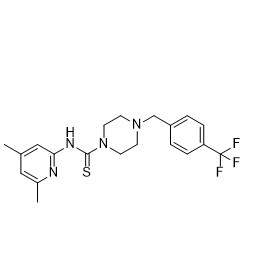
|
| DC10476 | NCGC00244536 Featured |
NCGC00244536 is a potent KDM4A inhibitor with an IC50 of 10 nM.
More description
|
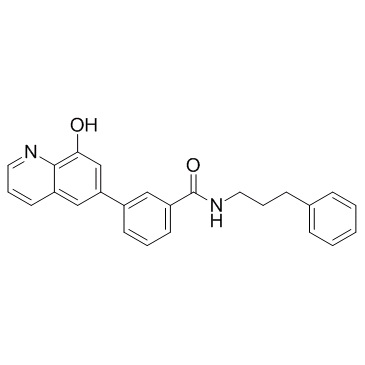
|
| DC9770 | NCB-0846 Featured |
NCB-0846 is a novel,first-in-class,orally TNIK inhibitor with an IC50 value of 21 nM,that have shown strong anti-tumor efficacy against several cancer models.
More description
|

|
| DC8474 | Napabucasin (BBI608) Featured |
Napabucasin (BBI608) is an orally-administered small molecule which can block cancer stem cell (CSC) self-renewal and induces cell death in CSCs as well as non-stem cancer cells.
More description
|

|
| DC20016 | Naloxegol Featured |
Naloxegol is a CYP3A4 enzyme inhibitor, is a peripherally-selective opioid antagonist, for the treatment of opioid-induced constipation.
More description
|
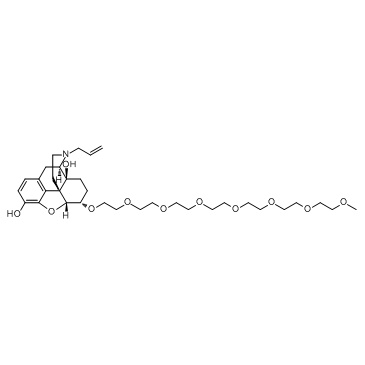
|
| DC9619 | Nafamostat (mesylate) Featured |
Nafamostat mesylate, a synthetic serine protease inhibitor, is an anticoagulant,showed highly potent activity against COVID-19(SARS-COV-2).
More description
|

|
| DC7471 | N6022 Featured |
N6022 is a potent, selective, reversible, and efficacious S-Nitrosoglutathione reductase(GSNOR) inhibitor(IC50=10 nM) which is currently undergoing clinical development.
More description
|

|
| DC9298 | thiotepa Featured |
N,N’N’-triethylenethiophosphoramide (ThioTEPA) is a cancer chemotherapeutic member of the alkylating agent group.
More description
|

|
| DC21360 | MZ1 Featured |
MZ1 is a PROTAC that tethers JQ1 to a ligand for the E3 ubiquitin ligase VHL, triggers, induces degradation of the BET bromodomain BRD4.
More description
|
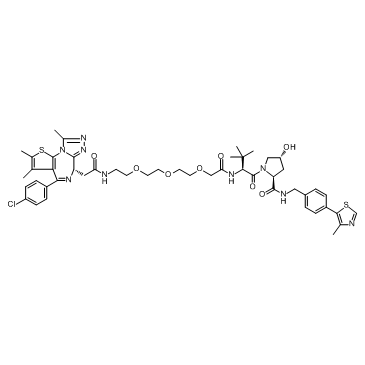
|
| DC10074 | MX69 Featured |
MX69 is the MDM2/XIAP inhibitor, used for cancer treatment.
More description
|

|
| DC10871 | MTX211 Featured |
MTX-211 is a dual inhibitor of EGFR and PI3K, used for the treatment of cancer and other diseases.
More description
|

|
| DC8822 | MSX-122 Featured |
MSX-122 is a n orally bioavailable inhibitor of CXCR4 with potential antineoplastic and antiviral activities.
More description
|
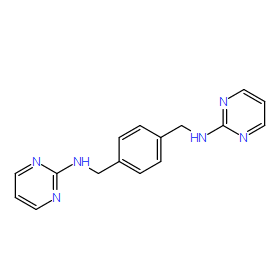
|
| DC10627 | MSC2530818 Featured |
MSC2530818, a CDK8 inhibitor with the IC50 of 2.6 nM, displays excellent kinase selectivity, biochemical and cellular potency, microsomal stability, and is orally bioavailable.
More description
|
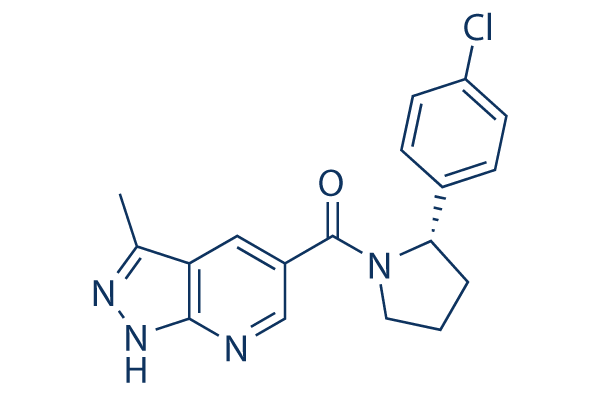
|
| DC7620 | MS436 Featured |
MS436 is a diazobenzene-based small-molecule inhibitor for the BRD4 bromodomains with a Ki value of 30-50 nM.
More description
|
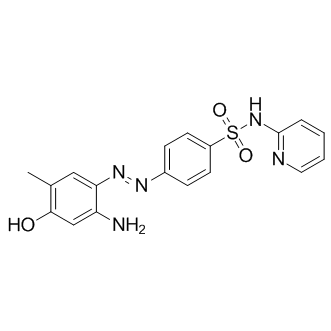
|
| DC12651 | MRTX1257 Featured |
MRTX1257 (MRTX-1257, MRTX 1257) is a potent, selective, covalent and irreversible inhibitor of KRAS G12C, inhibits KRAS dependent ERK-phosphorylation in the H358 cell with IC50 of 0.9 nM.
More description
|

|
| DC10635 | MRT67307 HCl Featured |
MRT67307 is a potent and dual IKKϵ and TBK1 inhibitor with IC50 of 160 and 19 nM, respectively.
More description
|

|
| DC12803 | MRS1754 Featured |
MRS1754 is a selective adenosine A2B receptor antagonist (Ki values are 1.97, 16.8, 403, 503, 570 and 612 nM for hA2B, rA1, hA1, hA2A, hA3 and rA2A receptors respectively).
More description
|

|
| DC12251 | MRS-1706 Featured |
MRS-1706 is a potent and selective adenosine A2B receptor antagonist with Ki of 1.39 nM.
More description
|
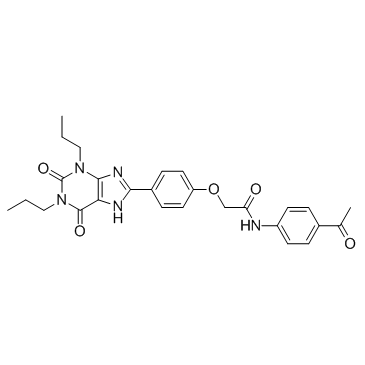
|
| DC10437 | MRE-269 Featured |
MRE-269 is an active metabolite of selexipag, and acts as a selective IP receptor agonist.
More description
|

|
| DC9542 | MPTP (hydrochloride) Featured |
MPTP HCl induced reduction in the DOPAC HVA/dopamine (DA) ratio and increase in striatal ascorbate (AS) oxidation in rats
More description
|
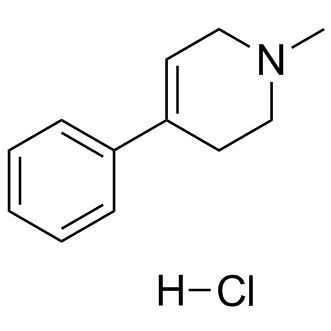
|
| DC7470 | MPI-0479605 Featured |
MPI-0479605 is an ATP competitive and selective inhibitor of mitotic kinase Mps1 with IC50 of 1.8 nM, >40-fold selectivity over other kinases.
More description
|

|
| DC7200 | Motesanib Diphosphate (AMG-706) Featured |
Motesanib (AMG-706) is a potent ATP-competitive inhibitor of VEGFR1/2/3 with IC50 of 2 nM/3 nM/6 nM, respectively; similar activity against Kit, ~10-fold more selective for VEGFR than PDGFR and Ret.
More description
|

|
| DC3160 | Montelukast Sodium Featured |
Montelukast belongs to a group of medications known as leukotriene receptor antagonists.
More description
|

|
| DC2082 | Monastrol Featured |
Monastrol is a reversible, cell-permeable inhibitor of the motor protein Eg5 (kinesin family protein 11, Kif11), blocking basal ATPase activity in vitro (IC50 = 6.1 µM) and inducing the formation of monoastral spindles in cell-based assays (IC50 = 51.3 μM
More description
|

|
| DC5089 | Ixazomib Citrate (MLN-9708) Featured |
MLN-9708 is a proteasome inhibitor, which inhibits the activity of the proteasome, blocking the targeted proteolysis normally performed by the proteasome.
More description
|
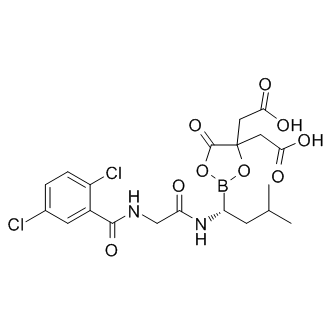
|
| DC2016 | MLN8237 (Alisertib) Featured |
MLN8237 (Alisertib) is a selective Aurora A inhibitor with IC50 of 1.2 nM.
More description
|

|
| DC5086 | Ixazomib(MLN2238) Featured |
MLN2238 inhibits the chymotrypsin-like proteolytic (β5) site of the 20S proteasome with IC50 and Ki of 3.4 nM and 0.93 nM, respectively, also inhibits the caspase-like (β1) and trypsin-like (β2) proteolytic sites, with IC50 of 31 and 3500 nM.
More description
|
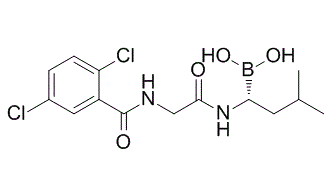
|
| DC2052 | ML-7 Hydrochloride Featured |
ML-7 Hydrochloride is a selective inhibitor of myosin light chain kinase (MLCK) (Ki = 0.3 μM).
More description
|
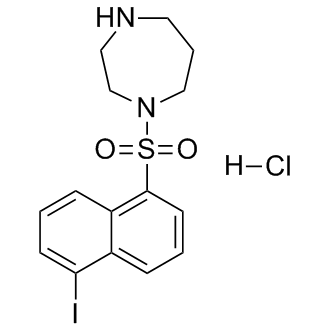
|
| DC20903 | ML401 (CID73169083) Featured |
ML401 (CID73169083) is a potent, functional antagonist of EBI-2 (Epstein-Barr virus-induced gene 2) with IC50 of 1 nM, displays activity in a chemotaxis assay (IC50=6 nM).
More description
|
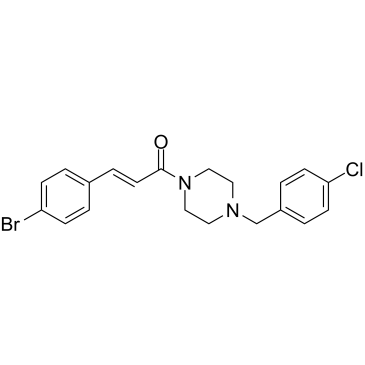
|